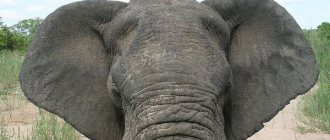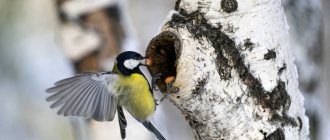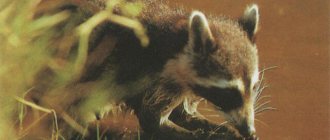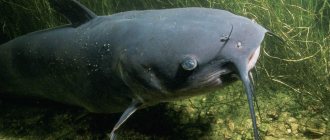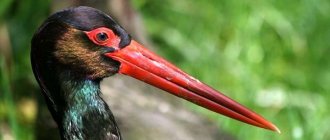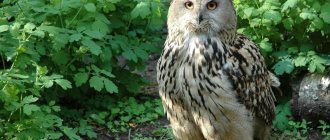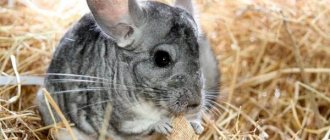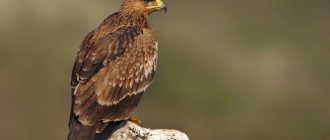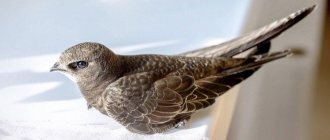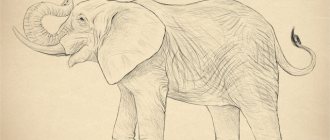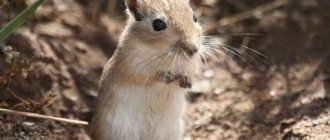Influential patron, successful enterprises
A dream of an animal of such an unusual color indicates: the dreamer has a connection with powerful forces. Therefore, in a difficult situation, it is not easy to defeat him.
Have you seen a black lion tied to a chain in a dream? The dream book promises an influential patron.
For a man, a dream about this animal is a positive sign. You can start new things that will become successful. If the lion showed friendliness, searching for a promising job or other activities will bring benefit and pleasure to the dreamer.
Kompromat.Ru ®
Lev Black. "The first Russian entrepreneur"
Original of this material © Satcor.ru, 01/03/2003, Photo: “MN”
| Lev Black |
Cherny Lev Semenovich, born in 1954 in Tashkent. Jew. Citizen of Israel.
Leo is the middle of three brothers. The older brother, Mikhail, born in 1952, lives in Israel, the younger brother, David, born in 1958, lives in the USA. After leaving Russia for the West in 1994, L. Cherny lived in Great Britain and Israel. (www.chernoi.ru 10.04.00)
While studying at the Tashkent Polytechnic Institute, student Cherny was actively involved in speculation, for which he was prosecuted. He bought his freedom in exchange for cooperation with the KGB. After graduating from high school, security officers provided Lev Cherny with a warm place - he took the post of head of the quality control department of a branch of the Tashkent Excavator Plant, which produced consumer goods. (Сompromat.Ru 10.03.00)
On the basis of this branch in 1985, Lev created one of the first production cooperatives in Uzbekistan. To work in it, he attracted his older brother Mikhail, who took over the organization of production, while Lev was involved in the supply of raw materials and sales of products, and financial issues. The cooperative essentially became the brothers' first and last joint venture.
Soon Lev Cherny became one of the largest “guild workers” working in the sphere of shadow production of consumer goods. Production was provided by raw materials that were obtained through systematic theft of state property on an especially large scale. In this, L. Cherny relied on the support of organized criminal groups in Tashkent, whose leaders were his former school friends. According to some reports, money for the promotion of the cooperative was allocated from the local “common fund”, since Lev was of interest to criminals in connection with the creation of a structure for laundering proceeds from racketeering, prostitution, arms and drug trafficking. Through connections with the Uzbek criminal community, primarily with Gafur Rakhimov and Tofik Arifov, Cherny established relationships with such major figures of the criminal world as thief in law Vyacheslav Ivankov (“Yaponchik”) and Otari Kvantrishvili (“Otarik”). (www. chernoi.nu)
In 1990, Cherny met the owner of the Trans Commodities company, Sam Kislin, a native of Odessa and now an American citizen. Together they begin to supply raw materials to Russian metallurgical enterprises. The lack of working capital forced the directors to resort to the services of L. Cherny and Kislin. The scope of Trans Commodities' activities expanded and soon L. Cherny registered the company Trans-CIS Commodities Ltd in Monte Carlo (Principality of Monaco). (TCC), which essentially took over Trans Commodities' business. Kislin’s attempts to achieve a civilized division were harshly suppressed: he was advised to “think seriously if his wife wants to see him and his children alive.”
According to the US FBI and Swiss police, “Yaponchik” became L. Cherny’s partner in Trans Commodities and the company was actively used to “launder” dirty money, including money received from the drug business.
In 1991, L. Cherny met in Moscow Goran Stanovich, a representative of the small company Trans-World Metals (TWM), owned by the English businessman David Ruben. At that time, TWM mediated the supply of small quantities of tin to the London Metal Exchange (LME) and collaborated with VO Raznoimport.
TCC began working together with TWM. It was then that the aluminum industry of Russia and other former republics of the USSR became the sphere of L. Cherny’s main interests. In 1992, a conglomerate of intermediary firms formed around TWM, called the Trans-World Group (TWG). (www.chernoi.nu)
In 1992, Cherny contacted Soskovets, who sanctioned a method of pumping money out of the country—tolling—in the Russian aluminum industry, unprecedented in the economic history of mankind. The regime of customer-supplied raw materials (alumina) “under customs control” exempted TWG from taxes and customs duties on imported raw materials and exported metal. At the same time, up to 75% of foreign currency earnings remained in the accounts of intermediary firms. Thanks to tolling, TWG quickly became one of the three largest players on the London Metal Exchange. In 1995, TWG sold over 1 million tons of aluminum on this exchange. 5% of total world production. TWG's annual revenue reached US$5 billion. TWG President D. Ruben repeatedly emphasized in the British press that “it was Lev, with his connections, who established business in the territory of the former Soviet Union.” Cherny was listed as only a general consultant at TWG, but, according to company employees, he resolved all issues related to the conduct of business in Russia, Ukraine and Kazakhstan alone. (Compromat.Ru 10.03.00)
Cherny himself argued that a foreign partner in the person of Ruben was necessary to raise funds to finance operations with aluminum smelters. However, in reality, Trans-World Metals, due to its scale, could not act as a major investor and L. Cherny needed TWG only for the legalization of capital of criminal origin, primarily for investing funds from the “common fund” in a legal business. TWG President D. Ruben is assigned the role of “sic-chairman”.
Almost throughout his entire career in big business, L. Cherny was in the field of view of law enforcement agencies. Thus, at the beginning of 1992, the American company Newtel Co., founded by emigrants from Russia, carried out a large-scale operation to collect ruble funds from Russian buyers for the purchase of imported industrial goods and food products. The collected funds were converted into hard currency (the total amount amounted to millions of dollars) and transferred abroad. It is alleged that their conversion through Stolichny Bank was organized by L. Cherny. (www.chernoi.ru)
Seeing the high profitability of operations in the Russian aluminum business, L. Cherny took energetic steps to establish control over the plants through the acquisition of significant blocks of their shares. To circumvent the 20% limit imposed by the Russian Government on the free acquisition of shares in Russian enterprises, L. Cherny created dozens of anonymous offshore companies in Monaco, Gibraltar, Switzerland, the Virgin Islands, the Bahamas, Cyprus, etc. In turn, these offshore companies established subsidiaries in Russia, of which there were over a hundred. A network of these companies was actively involved in buying up shares, which allowed TWG to become a shareholder in enterprises that produced a total of more than 2 million tons of aluminum per year by the beginning of 1995. These are Bratsk (BrAZ), Krasnoyarsk (KrAZ), Sayan (SaAZ), Novokuznetsk (NkAZ) and Nadvoitsky (NAZ) aluminum smelters.
When buying shares in factories, funds were used stolen from the country's budget with the help of so-called “Chechen advice notes.” The investigation into the case of false advice notes revealed that most of the companies making payments were one-day floats and disappeared after payment under an agreement with TCC. There were no formal grounds for bringing charges against the head of Trans-CIS in such a scheme. (Compromat.Ru 10.03.00)
According to experts, L. Cherny is involved in the theft of at least 800 million dollars out of a total amount of about 2 billion stolen from the Russian banking system using forged bank documents.
It is still unclear how exactly Trans-World financed the start of its activities in Russia. David Reuben claims that he and Simon contributed their own funds to the initial operation, but no documentation has been produced to indicate that they were the source of the initial funding. And this brings us back to the case of the theft of funds from the Central Bank, at the center of which is a scam involving multi-level transactions under the guise of which dollar-ruble exchanges were carried out and, through Russian banks, government funds were transferred using false advice notes to a number of companies, including Trans-World. In the midst of the deals are two companies with similar names: Trans-CIS Commodities, founded by Lev with the help of David Ruben, and Trans-Commodities, a company located in New York, 50% of which belonged to Mikhail (Mikhail’s partner in Trans-Commodities was Sam Kislin, who was mentioned in the FBI report as having ties to the imprisoned Russian "godfather" and whose nephew Joel Bartow claims worked with Mikhail Cherney. Kislin subsequently became a member of the New York City Economic Development Committee and made significant financial contributions in support of Bill Clinton, Al Gore and Rudolph Giuliani. He denies any ties to the Mafia or Trans-World). (Fortune 12.06.00)
In the struggle for the division and redistribution of property in the aluminum industry, the forces of organized crime were most actively involved. The death toll in this fight (which journalists called the “Great Patriotic Aluminum War”) was in the dozens. Particularly bloody were the clashes between factions vying for control of the Krasnoyarsk aluminum smelter. At the instigation of L. Cherny, in 1991, one of the local criminal leaders Anatoly Bykov (“Bull”), whose “godfathers” were the leaders of Uzbek organized crime groups, in particular Cherny’s school friend T. Arifov, infiltrated KrAZ. He recommended Bykov to his former countryman L. Cherny, and he convinced Ivankov-“Yaponchik” to place a bet on “Bull”.
Over the next two years, Bykov managed to oust or destroy all his competitors and headed the organized criminal community of the Krasnoyarsk Territory. There was also a corresponding division of the spheres of influence of criminals in the aluminum industry of the region: thief in law Vladimir Tyurin (“Tyurik”), who represented “Yaponchik” in Eastern Siberia, oversaw the supply of alumina to BrAZ, Bykov was legalized as one of the co-owners of KrAZ, and Vladimir, closely associated with Bykov Tatarenkov (“Tatar”) tried to establish control over SaAZ. “Tatar” led a gang that numbered up to 60 active fighters and, for its cruelty, was recognized as the most dangerous criminal group in the East Siberian region. During May-June 1994 alone, Tatar militants killed 10 people related to the struggle for influence at KrAZ.
Shortly before this, in April 1994, O. Kvantrishvili was shot in Moscow, who, as it became known later, took certain steps in order to displace L. Cherny's companies in the aluminum complex of Russia.
Fearing for his life, L. Cherny moved to the West with the beginning of criminal showdowns. There, especially at first, he constantly moved from place to place, living alternately in London, Paris, Monaco, New York, Tel Aviv, and Caracas.
In 1995, the victims of contract killings were: in April, the vice-president of Yugorsky CB Vadim Yafyasov, in June the president of the same bank Oleg Kantor, in September the representative of the American company AIOC Felix Lvov.
Yugorsky Bank, faced with serious financial problems, tried to reorient itself to servicing aluminum smelters, and Yafyasov, a few days before his death, even took the post of commercial director of KrAZ, where the structure he and Kantor represented became a competitor to TWG. Moreover, Yafyasov was a partner of L. Cherny for some time and had information about his business. Despite the pressure put on him, Yafyasov agreed to testify in the case of false advice notes, which, according to law enforcement officials, was the reason for his murder. (www.chernoi.ru)
In September of the same year, Felix Lvov, a representative of the American company A1OC, was killed. This company worked with Russian aluminum smelters and according to the tolling invented by Cherny, and inadvertently wandered into his “garden.” Lvov had the imprudence to declare at hearings in the State Duma about the need to investigate violations of the law during the privatization of the aluminum industry, which directly affected the interests of L. Cherny, who then carried out the seizure of KrAZ through Bykov. Lvov was offered a post in the TWG and, after refusing, he was killed.
In June 1996, in the center of Moscow, the president of the National Sports Foundation, Boris Fedorov, received a bullet and four stab wounds, who had recently refused to cooperate with Trans-World and made public some information about the business of L. Cherny and his partners in Russia. On the night of April 24, 1999, Fedorov, under unclear circumstances, suddenly died in his home in Moscow.
In 1998, TWG took control of the Krasnoyarsk Aluminum Plant (KrAZ), which owns 60% of the shares of the Achinsk Alumina Refinery (AGK). In the summer of 1998, the term of external management at the plant ends. Manager G. Fetisov insisted on the immediate sale of the AGK at auction - anyway, the plant’s 827 creditors do not intend to wait long. The real buyers are the Alpha group and Siberian-Ural Aluminum Copperfield. As the Western press reported, the center of the investigation was, in particular, an emigrant from the Soviet Union with an Israeli passport, Lev Cherny. According to NCIS intelligence, he was a liaison between the British trade and intermediary company Trans World Group (TWG) and the organized criminal groups of the “Russian mafia”. During operational investigative activities, including wiretapping Cherny, it was possible to identify his contacts with people involved in international drug trafficking, the “neighborhood father” of the American branch of the Russian mafia. It was discovered that 25% of all phone calls from Trans-World's London office were made to apparent mafiosi involved in money laundering, drug and gem smuggling. In Russia, one of the investigators established a connection between Chernykh and the transfer of proceeds from the sale of drugs and theft of cars through retail trade to London. According to the investigator, the volume of these frauds was too large to create a clear picture, as the report on the Copperfield operation claims. The Minister of Internal Affairs of the Russian Federation, in the absence of legislation on money laundering, requested assistance from the FBI
Russia's new interior minister, Anatoly Kulikov, publicly announced in 1997 that he was expanding the Central Bank investigation into Lev and his associates. Kulikov also linked the aluminum trade to the Izmailovo group, and stated that the group is under the control of Mikhail Cherny’s friend, Anton Malevsky, who runs it from Israel. He also stated that “practically all” transactions between KrAZ and BrAZz were under the control of criminal groups.
In March 1998, Yeltsin removed Kulikov from his post, and two weeks later the new Minister of Internal Affairs announced that Lev Cherny was no longer under suspicion as an accomplice in the theft of Central Bank funds.
The Blacks were officially cleared of complicity in the Central Bank affair because the Home Office concluded that despite the fact that a group of people linked to organized crime were behind the scam, and despite the fact that the Blacks clearly benefited from it , there is no evidence that the Blacks knew that the funds were stolen. These findings not only helped Lev return to Russia in a (now clearly failed) attempt to restore the crumbling Trans-World empire, but also stopped an investigation that could have destroyed Trans-World's operations in Russia. Lev came out of suspicion partly thanks to the testimony of Gennady Druzhinin, one of the leaders of KrAZ. Imagine our surprise when it was discovered from bank documents that Trans-World had previously paid Druzhinin exactly a million dollars - and this was at a time when Trans-World was allegedly sold out of KrAZ. (Fortune 12.06.00)
In the summer of 1998, L. Cherny moved to Russia, where he planned to stay permanently and hide from possible criminal prosecution. Here he is conducting an active PR campaign to create the image of a major patriotic entrepreneur, a statesman, which would allow him to legalize himself and legalize his business. Millions of dollars are spent to pay for publications within the framework of this campaign in many central newspapers (Komsomolskaya Pravda, Trud, Rossiyskaya Gazeta, Parlamentskaya Gazeta, etc.). In addition, Lev Cherny tried to use Berezovsky’s opportunities to enter the Russian establishment and even the presidential circle. However, having paid for Berezovsky’s purchase of the Kommersant publishing house (through a certain fund headed by Cherny’s man Kia Jurabchian) and a controlling stake in TV-6, Cherny essentially received nothing in return, since in the run-up to the elections politicians and high-ranking officials tried to distance themselves from him. so as not to be compromised by connections with such an odious person.
Cherny's relationship with Berezovsky did not go unnoticed. The Swiss prosecutor's office, conducting an investigation into Berezovsky, also became interested in companies associated with Lev Cherny, and during the investigation, they arrested one of their top managers, David McNeil. However, at present L. Cherny continues his public campaign, the main goal of which is not only personal positioning in the ranks of the political elite, but also the introduction of his henchmen into the structures of all branches of government at the federal and regional levels. Lev Cherny’s close ties with the top of organized crime and the origin of his capital give every reason to believe that he is carrying out the task of ensuring the massive penetration of crime into power. (www.chernoi.nu)
Instead of an afterword:
Cherney's partner David Ruben likes to claim that Trans-World "saved" Russia's aluminum industry, the only industry to increase productivity by 7% since 1989. At the height of their influence, in 1997, the Reubens claim they "invested" approximately $400 million in these plants. The Russian Ministry of Economy puts a figure close to zero. In reality, Trans-World was systematically starving one of the most viable industries of the former Soviet Union, giving plants oxygen only so they could work for their tolling racket while the equipment became obsolete both morally and physically. The BrAZ audit report for 1997 shows $600 million in sales losses - this is for the world's largest aluminum smelter. The Reubens' internal reporting for the same year shows that Trans-World and plant management made nearly $200 million in profits.
In exactly the same way, the Rubens and Chernys acquired control of one of Russia's largest steel enterprises in 1995 - and by 1997 they were pumping out of it approximately $300 million a year. When a group of American investors, including George Soros, announced that... that they acquired approximately 50% of the plant's shares, they were not admitted to the board of directors and were not allowed to familiarize themselves with the company's trading contracts, although the court ruled in their favor. And no wonder - the plant's profit (before taxes) fell from $80 million in 1995 to $40 million in 1996, despite the strengthening of the steel market. (Fortune)
Love relationships
For a woman to see such a predator in a dream means that she will have a young lover, but she cannot expect support from him.
A woman’s dream about a hunting king of animals of such an unusual color suggests, according to the dream book: she dreams of finding a man with whom she can realize all her hitherto hidden desires.
Why does a woman dream about being attacked by a black lion? The vision promises a quick separation from your lover.
You may suffer because of other people's interests
Did you dream of seeing an animal with this color chasing you? There is danger from a person in authority. A person can use all his influence against you.
In a dream, he also foreshadows, according to the dream book: you can become an unwitting victim of a conflict of interests of two parties, each of which has some authority and influence. Be careful: your professional future and career are at risk. You can avoid such a situation if you notice its prerequisites in time. You should not enter into conflicts with influential individuals.
Types and classification of lions
The classification of lions includes 8 subspecies:
- Asiatic (Persian, Indian) lion (
Panthera leo persica )
It is distinguished by a squat body and a sleek, not too thick mane. The weight of a lion is 150-220 kg, for males from 160 to 190 kg, for females from 90 kg to 120 kg. The height of the Asiatic lion at the withers reaches 1.05 meters. The record length of the lion reached 2.92 meters. Just over 500 representatives of this lion species live in the Indian Girsky Nature Reserve. The largest Asiatic lion was recorded to be 2.92 meters long;
Asiatic (Persian, Indian) lion
- Barbary lion (Panthera leo leo)
the most massive predator with a dark thick mane. Inhabited throughout the African continent. Unfortunately, it was finally exterminated by man at the beginning of the 20th century. Today, descendants of the Barbary lion live in captivity, but there is no need to talk about the purebred of the species. The weight of a male lion reaches 160-270 kg, the weight of a female is 100-170 kg. It was the largest predator of all lion species;
- Senegalese (West African) lion (
Panthera leo senegalensis )
Males are distinguished by a light, short mane (or lack thereof), light fur and small size. Prides of this predator are smaller, and the shape of the skull is different from other species of lions. The habitat is located south of the Sahara from Senegal in the west and in the east to the Central African Republic. About a thousand representatives live in the savannas of Guinea, Nigeria and Senegal. This lion species is endangered;
Senegalese lion
- Northern Congo lion (
Panthera leo azandica )
in appearance it is similar to other African relatives. Lives in the savannas of northeastern Congo. The population of this lion species is gradually decreasing;
- East African (Masai) lion (
Panthera leo nubica )
subspecies of African lion. Males are distinguished by elongated limbs and a “combed” back mane. Male lions reach a length of 2.5 - 3 meters, including the tail. The length of lionesses with a tail is 2.3 - 2.6 meters. The weight of a male lion is 150 - 230 kg, females 100 - 165 kg. Lions and lionesses have a withers height of 90 - 115 cm. The habitat of this species of lions is Zambia, Uganda, Mozambique and other states in eastern Africa, and also inhabit the Kenyan Masai Mara reserve;
- southwest African (Katangese) lion (
Panthera leo bleyenberghi )
differs in light color. It lives in southwestern Africa from Angola to Zimbabwe. The length of a male lion including his tail is 2.5 – 3.1 meters, the length of a lioness is 2.3 – 2.65 meters. The weight of a male lion is 140-240 kg, the weight of females is 105-170 kg. An endangered species of lions, on the verge of extinction;
- southeast African (Transvaal) lion (
Panthera leo krugeri )
large individuals, males have a long dark mane. Some representatives exhibit leucism, a mutation associated with the absence of melanocytes. These exotics have white fur and pink skin. The body length of the Transvaal lion with a tail is 2.6 - 3.2 meters, the lioness's dimensions are more modest - 2.35 - 2.75 meters. The weight of a male reaches 150-250 kg, females - 110-180 kg. More than 2 thousand lions live in the Kruger National Park, as well as in the southern part of the African continent and in the Kalahari Desert;
- Cape lion (
Panthera leo melanochaita )
A subspecies that disappeared in the 19th century. The last Cape lion was shot in 1858. These lions lived in the Cape Province at the Cape of Good Hope, which is located in southern Africa. This species of lion was distinguished by black-tipped ears, and the lion's mane covered the belly and shoulders of the mammal.
Extinct Cape Lion
Together with the tiger, leopard and jaguar, the lion forms the genus Panthera, members of which can interbreed to form viable hybrids: ligers (tigers), leopons (leopard + lion) and jaguls (jaguar + lion).
